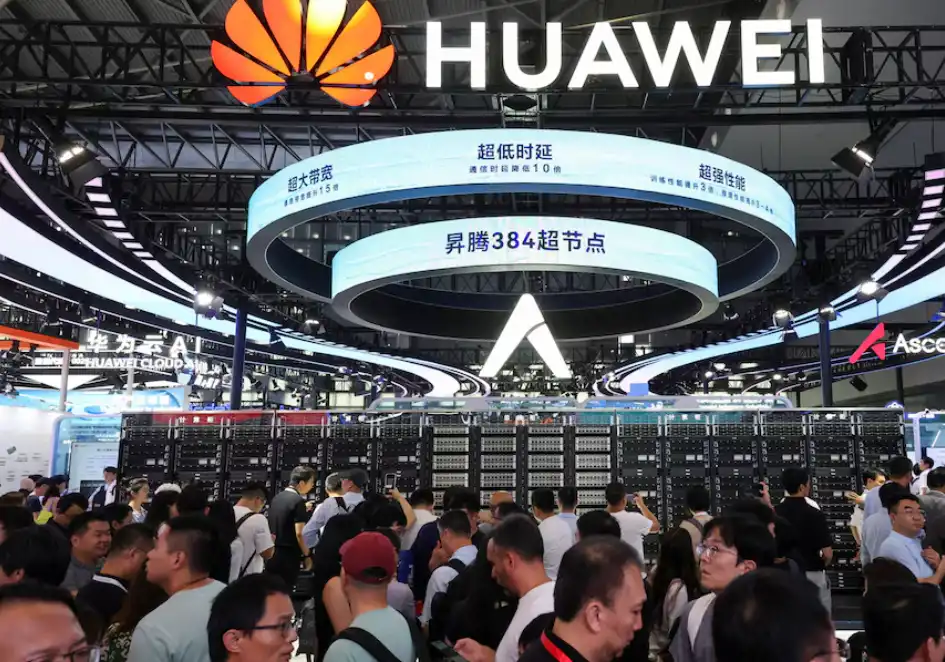Huawei Showcases CloudMatrix 384 AI System to Challenge Nvidia’s Most Advanced Hardware
Huawei Technologies has unveiled its most powerful artificial intelligence computing system to date, the CloudMatrix 384, a next-generation platform that experts say could rival Nvidia’s top-tier GB200 NVL72. The system made its public debut at the 2025 World Artificial Intelligence Conference (WAIC) in Shanghai, where global AI leaders gathered to present their latest innovations.
Huawei CloudMatrix 384 vs Nvidia GB200 NVL72: A New AI Hardware Showdown
The CloudMatrix 384 incorporates 384 of Huawei’s Ascend 910C AI chips, a strategic move designed to offset the relatively weaker performance of individual chips by scaling up their usage through sophisticated system-level design.
In contrast, Nvidia’s GB200 NVL72 system uses 72 of its most powerful B200 chips. Yet, according to SemiAnalysis, a leading semiconductor research group, Huawei’s CloudMatrix outperforms Nvidia’s solution on several performance metrics, thanks to innovations in interconnectivity and system efficiency. “Huawei now has AI system capabilities that could beat Nvidia,” said Dylan Patel, founder of SemiAnalysis.
Key Features of the Huawei CloudMatrix 384 AI Computing System
- 384 x Ascend 910C chips integrated using supernode architecture
- High-speed interconnectivity between chips for optimised parallel processing
- Designed to support large-scale AI workloads on Huawei Cloud
- Operational status confirmed by Huawei Cloud CEO Zhang Pingan in June
- Built to overcome limitations imposed by U.S. export restrictions
While Huawei booth staff declined to provide technical details during WAIC, the system generated buzz among conference attendees, analysts, and competitors alike.
Huawei’s AI Strategy: Competing Amid U.S. Sanctions
Huawei has rapidly gained ground as China’s top domestic AI chip supplier, especially as U.S. export restrictions continue to limit Chinese access to cutting-edge U.S. hardware. Nvidia CEO Jensen Huang even acknowledged Huawei’s momentum, telling Bloomberg in May that the company was “moving quite fast” and highlighting the CloudMatrix as a key example.
Huawei’s strength lies not just in chip production, but also in integrated system design, enabling it to build high-performance platforms from less advanced components — a major advantage in an environment shaped by geopolitical constraints.
Global AI Community Takes Note
The CloudMatrix 384 system has attracted significant attention from AI developers, cloud service providers, and industry analysts, with many seeing it as a viable alternative to U.S.-made AI accelerators. Its appearance at WAIC 2025 signals Huawei’s intent to solidify its position in AI infrastructure, not just in China, but globally.
What’s Next for Huawei and the AI Hardware Race?
While Huawei has not disclosed pricing or commercial availability timelines for CloudMatrix 384, the system is already live on the Huawei Cloud platform and is expected to play a crucial role in China’s push for AI self-sufficiency.
As AI model complexity and data demands surge, supernode-based AI systems like CloudMatrix 384 are likely to become central to how countries and companies approach scalable, sovereign AI development.












